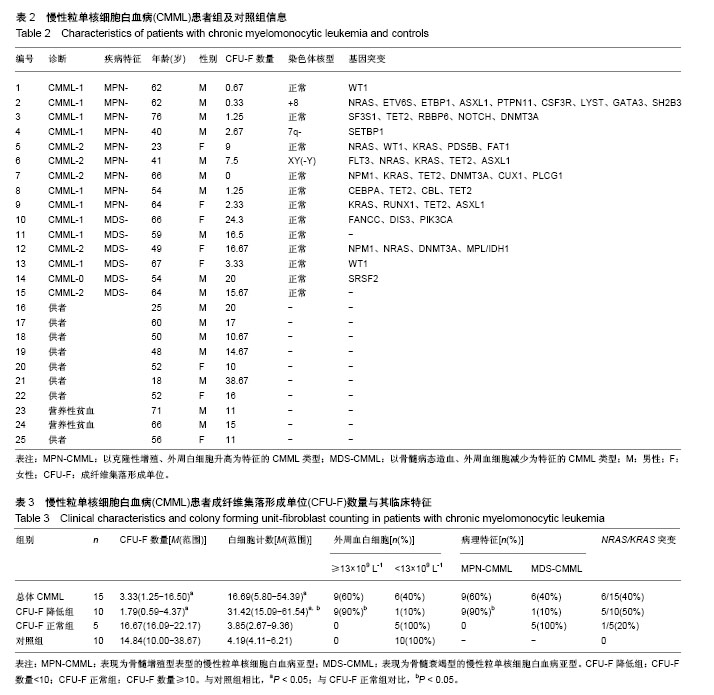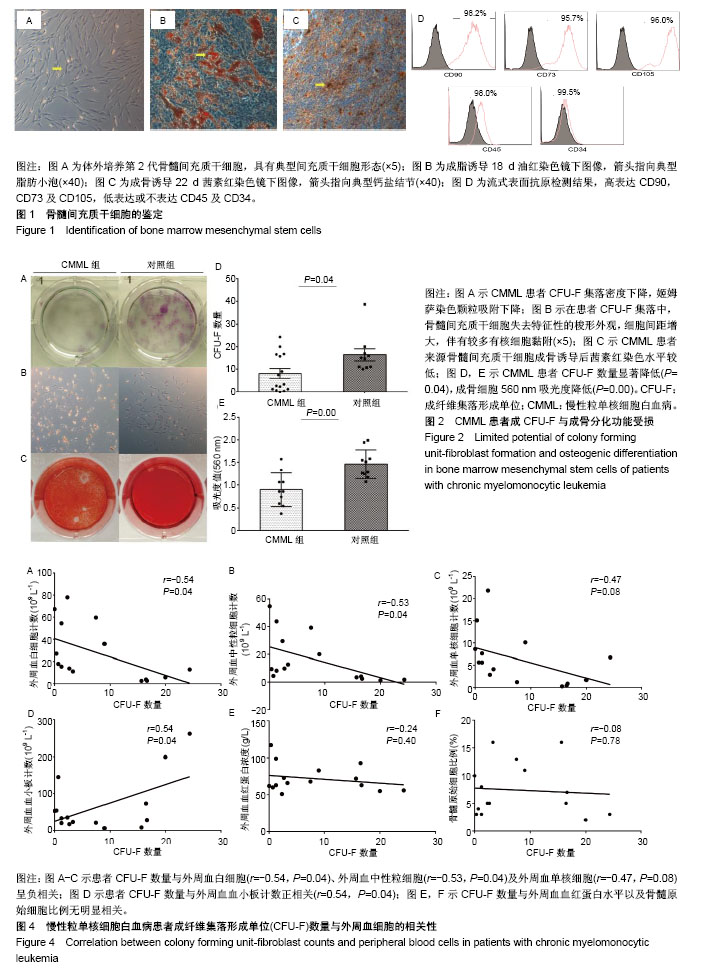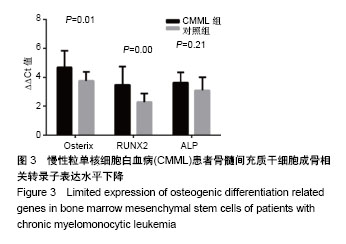| [1] Tefferi A, Vardiman JW.Myelodysplastic syndromes.N Engl J Med. 2009;361(19):1872-1885.[2] Arber DA, Orazi A, Hasserjian R, et al.The 2016 revision to the World Health Organization classification of myeloid neoplasms and acute leukemia.Blood. 2016;127(20): 2391-2405.[3] Kuznetsov SA, Friedenstein AJ, Robey PG. Factors required for bone marrow stromal fibroblast colony formation in vitro. Br J Haematol. 1997; 97(3):561-570.[4] Nifontova I, Svinareva D, Petrova T, et al. Sensitivity of mesenchymal stem cells and their progeny to medicines used for the treatment of hematoproliferative diseases. Acta Haematol. 2008;119(2):98-103.[5] Caplan AI. Mesenchymal stem cells. J Orthop Res.1991; 9: 641-650.[6] Balaian E, Wobus M, Weidner H, et al.Erythropoietin inhibits osteoblast function in myelodysplastic syndromes via the canonical Wnt pathway. Haematologica. 2018;103(1):61-68.[7] Tauro S, Hepburn MD, Bowen DT, et al. Assessment of stromal function, and its potential contribution to deregulation of hematopoiesis in the myelodysplastic syndromes. Haematologica. 2001; 86: 1038-1045.[8] Ren G, Zhang L, Zhao X, et al. Mesenchymal stem cell-mediated immunosuppression occurs via concerted action of chemokines and nitric oxide. Cell Stem Cell. 2008; 2:141-150.[9] Geyh S, Oz S, Cadeddu RP, et al. Insufficient stromal support in MDS results from molecular and functional deficits of mesenchymal stromal cells. Leukemia.2013;27:1841-1851.[10] Chen S, Zambetti NA, Bindels EM, et al. Massive parallel RNA sequencing of highly purified mesenchymal elements in low-risk MDS reveals tissue-context-dependent activation of inflammatory programs. Leukemia.2016; 30: 1938-1942.[11] Ricci C, Fermo E, Corti S, et al. RAS mutations contribute to evolution of chronic myelomonocytic leukemia to the proliferative variant. Clin Cancer Res.2010; 16: 2246-2256.[12] Patnaik MM, Tefferi A. Chronic myelomonocytic leukemia: 2018 update on diagnosis, risk stratification and management. Am J Hematol. 2018; 93(6):824-840.[13] Niyongere S, Lucas N, Zhou JM, et al. Heterogeneous expression of cytokines accounts for clinical diversity and refines prognostication in CMML. Leukemia. 2019;33(1):205-216.[14] Fedders H, Alsadeq A, Schmah J, et al. The role of constitutive activation of FMS-related tyrosine kinase-3 and NRas/KRas mutational status in infants with KMT2A-rearranged acute lymphoblastic leukemia. Haematologica.2017; 102: e438-e442.[15] Liang DC, Chen SH. Mutational status of NRAS, KRAS, and PTPN11 genes is associated with genetic/cytogenetic features in children with B-precursor acute lymphoblastic leukemia. Pediatr Blood Cancer. 2018; 65(2). doi: 10.1002/pbc.26786. |
.jpg)



.jpg)
.jpg)
.jpg)